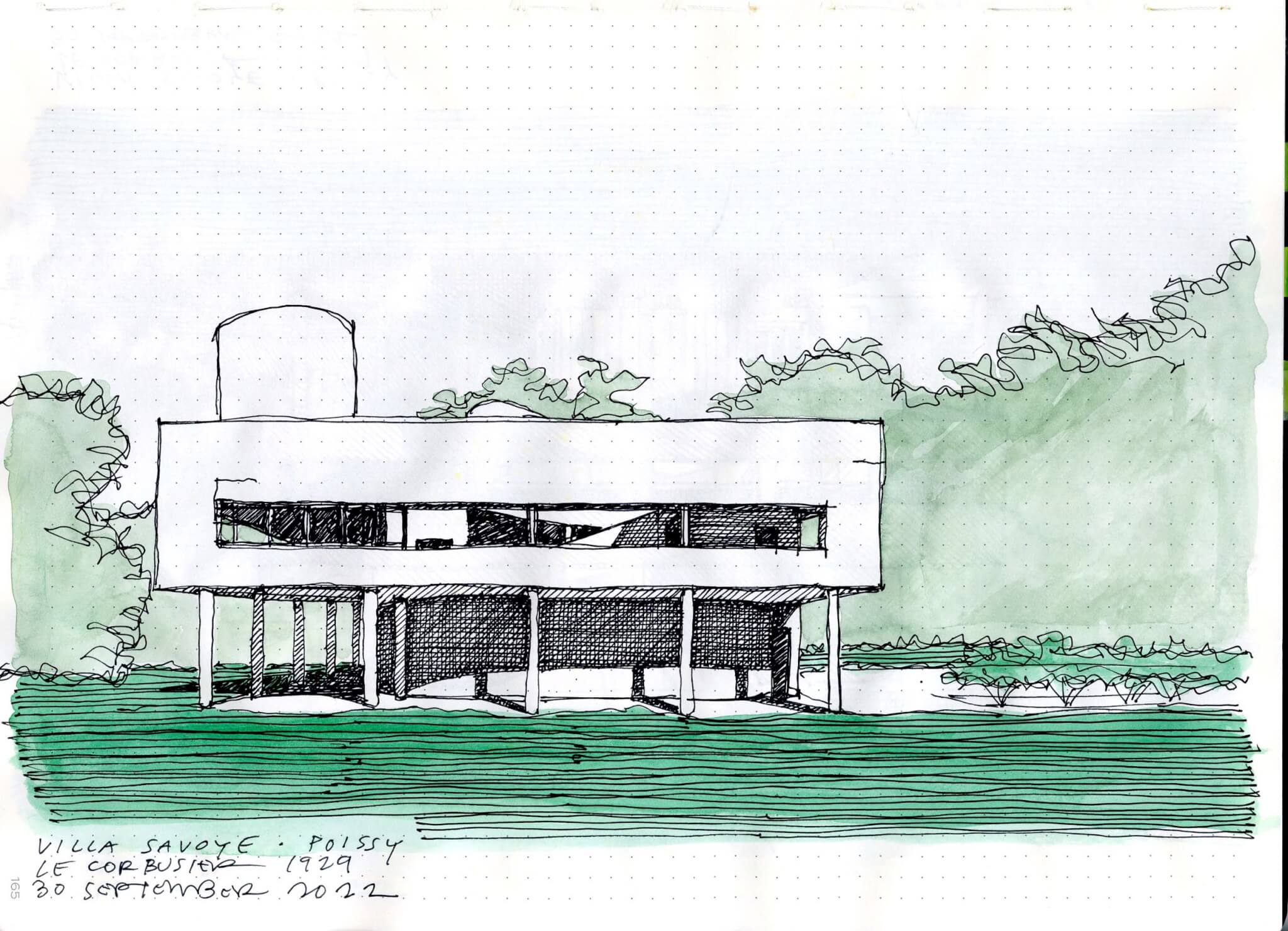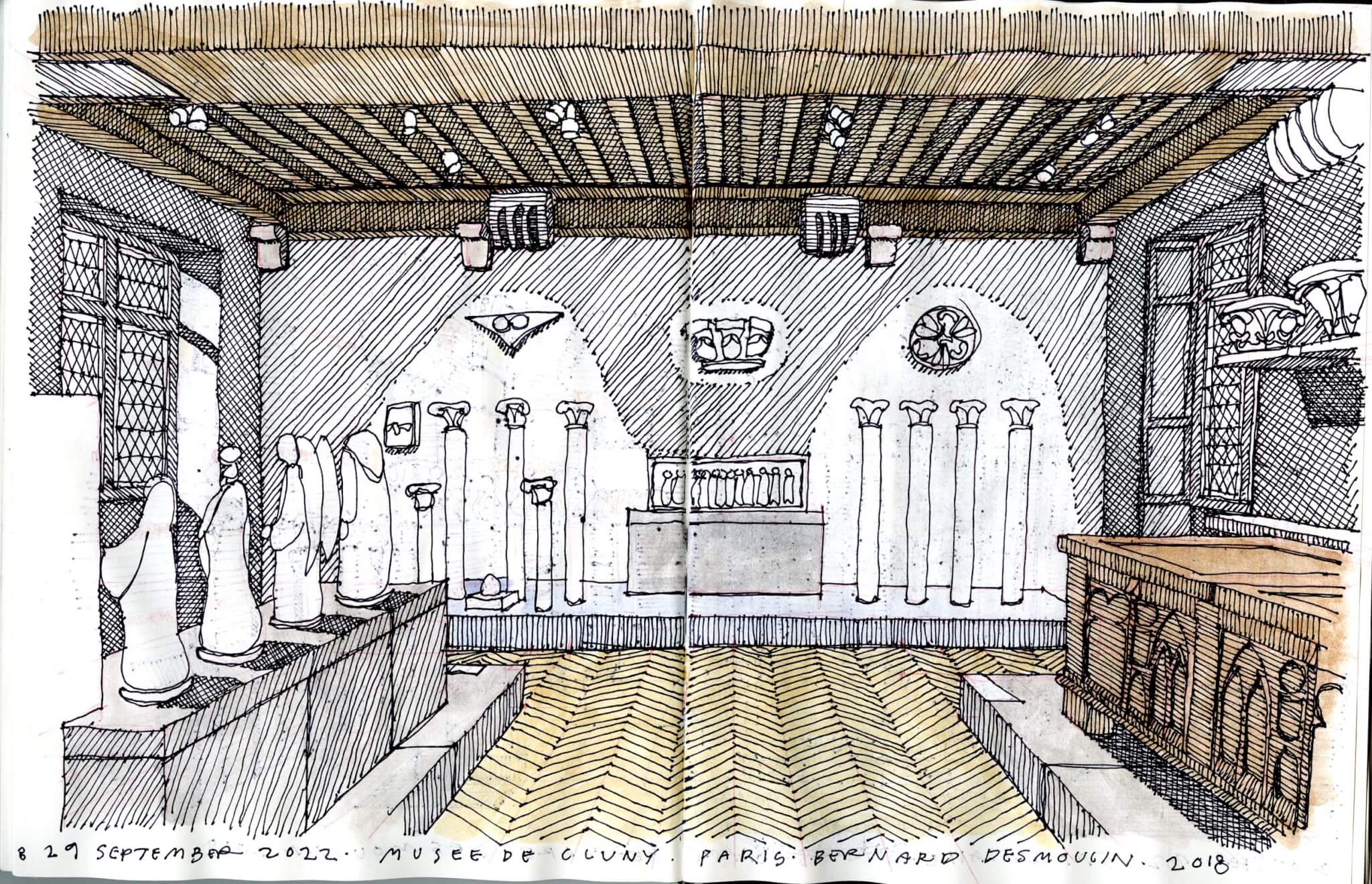Travel sketching for me began during my freshman year at Auburn University. We were required to keep a sketchbook to draw and document buildings and spaces around town. I expanded this practice to field trips to places like Atlanta (our nearby big city), then most fully during a study abroad semester, when my fellow students and I recorded the trip by drawing and documenting buildings in our sketchbooks. I also shot about 1,100 35mm slides during the same semester; in the 44 years since, I have never looked at them.
However, I’ve returned to my sketchbook for memories of the trip and experiences. Unlike a photo, the things I draw become inscribed in my mind; revisiting the drawings brings me back to that place and time with a visceral sense of recall. As I have gotten older, I am less comfortable with quick line sketches. Now, I search to know and understand mass, shadows, how light falls in a space and on a facade. This requires more time and greater care, so knowing I have at least a few hours in a place is essential. This means I cannot see as many things while traveling—no whirlwind tours—but the things I do see I am able to enjoy, contemplate, and, importantly, understand. Usually, I record my travels in bound sketchbooks using a Sharpie pen and watercolor for infill.


While preparing for a 2022 trip to Paris, I read about the Musée de Cluny and architect Bernard Desmoulin’s restoration and interventions there and was fascinated by it. My wife and I were able to visit and see Musée de Cluny firsthand. Desmoulin made circulation through complex older buildings an adventure, rewarded with beautiful spaces, innovative installations of the collections, and many memorable moments, not the least of which is the new entry with its sculptural bronze facade.
Michael Malone is the founding principal of Malone Maxwell Dennehy Architects and an adjunct assistant professor of architecture at the University of Texas at Arlington.
→ Continue reading at The Architect's Newspaper
